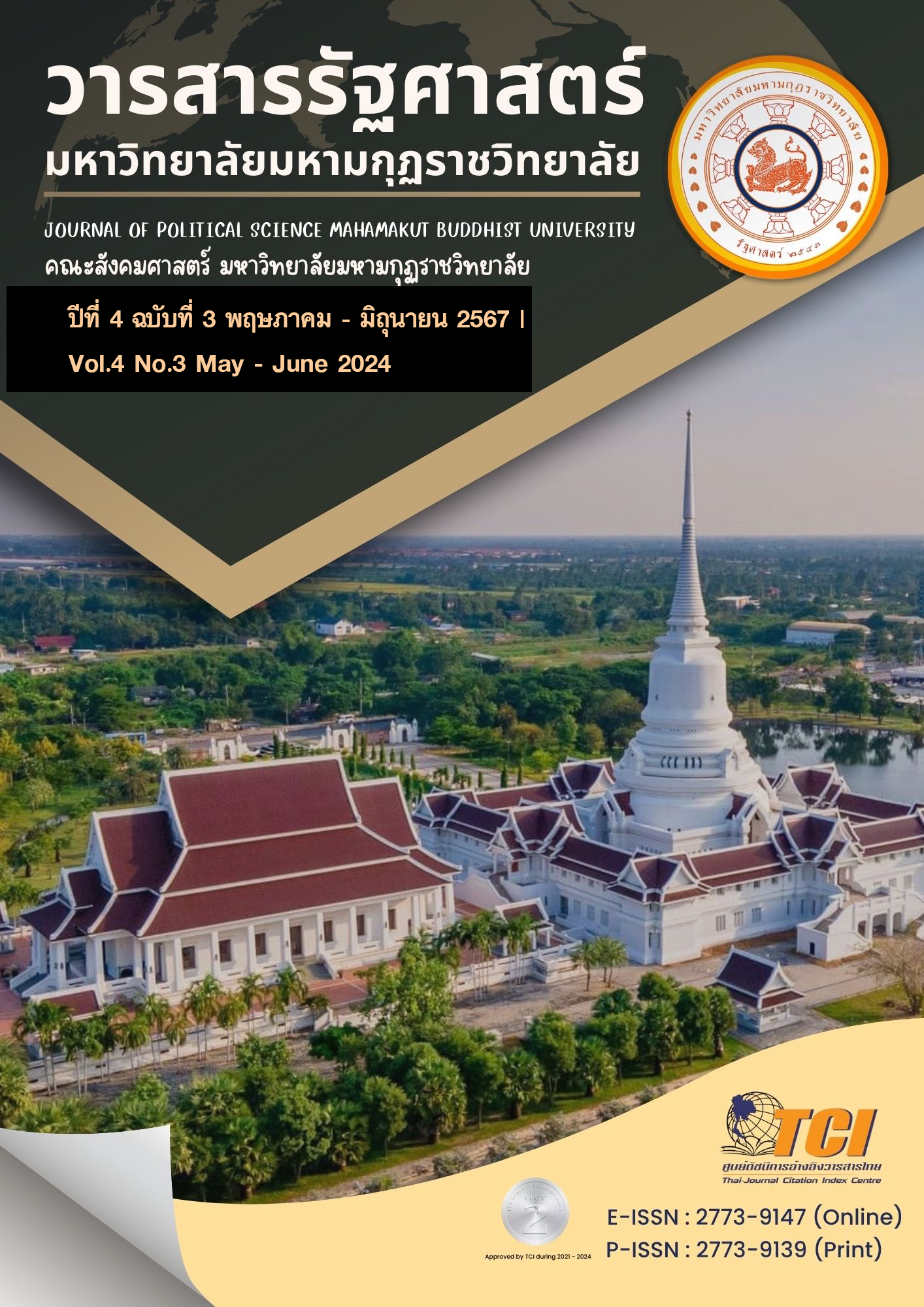THE SOCIO-CULTURAL SECURITY: THE CHALLENGES OF BUDDHISM IN LUANG PRABANG
Main Article Content
Abstract
The Socio-cultural security is considered as one of human security dimension which is important. The Buddhism and socio-cultural structure, such as way of life and behavior of Laos people in Luang Prabang, have to face a new challenge of the information technology development, which is contemporarily more intense and severe. Thus, the Buddhism remains strongly resistance to Gobalisation by compliance to mediocre of the Buddhism, adaptation to condition of changes. Furthermore, the Lao monk conduct to Buddhist established principles. The social structure changes, affected by consumerism, impact continuously to landlord migration to a rural vicinity for tourism business investment in Luang Prabang. The expansion of Chinese community to Lao People’s Democratic Republique and western culture affect to way of life of Lao people in Luang Prabang who adhere and comply with tradition and norms. Lao people faiths in Buddhism principles, simultaneously in spirituel beliefs. The cultural inheritance by beliefs and Buddhism faith must go on systematically and continuously from generation to generation.
Article Details

This work is licensed under a Creative Commons Attribution-NonCommercial-NoDerivatives 4.0 International License.
References
กระทรวงแถลงข่าวและวัฒนธรรม. (2543). ประวัติศาสตร์ลาว (ดีกดำบรรพ์-ปัจจุบัน).เวียงจันทน์: โรงพิมแห่งลัด.
ธเนศ วงศ์ยานนาวา. (2018). แปลผลงาน On Governmentality ว่า “ว่าด้วยการปกครอง” ต่อมาแปลเป็น “การปกครองชีวญาณ” ซึ่งได้ให้เหตุผลว่ามาจากคำว่า “govern + mentality” ที่แปลว่า “การปกครองวิธีคิด” ซึ่งได้แปลได้ความหมายตรงและเป็นที่ยอมรับในวงวิชาการอย่างแพร่หลายแล้ว อ่านเพิ่มเติม การกลับไปพิจารณา “เหตุผลของรัฐและการปกครองชีวญาณของฟูโกต์: ทัศนะเชิงวิพากษ์จากคำบรรยายที่วิทยาลัยแห่งฝรั่งเศส เรียกใช้เมื่อ 23 ตุลาคม 2561 จาก http://www.patranun. com/2015/09/blog-post.html
ปิยฉัตร์ สินธุสอาด. (2540). สังคมล้านช้างตั้งแต่ปลายพุทธศตวรรษที่ 21 ถึงต้นพุทธศตวรรษที่ 23. ใน วิทยานิพนธ์ปริญญามหาบัณฑิต, ภาควิชาประวัติศาสตร์ คณะศิลปศาสตร์ มหาวิทยาลัยธรรมศาสตร์.
ศุภชัย สิงห์ยะบุศย์ และคณะ. (2545). ลาวตอนล่าง “สะหวันเขต สาละวัน เซทอง จำปาสัก และอัตตะปือ: ห้าแขวงลาวตอนล่าง. กรุงเทพมหานคร: เอกสารวิชาการชุด โครงการอาณาบริเวณศึกษา 5 ภูมิภาค, ลำดับที่ 9, สำนักงานกองทุนสนับสนุนการวิจัย.
สมสุข หินวิมาน. (2556). หน่วยที่ 9 เทคโนโลยี การสื่อสาร และโลกาภิวัตน์, ชุดวิขาเศรษฐกิจและการเมืองระหว่างประเทศ. นนทบุรี: มหาวิทยาลัยสุโขทัยธรรมาธิราช.
David Berliner. (2010). Perdre l’esprit du lieu : les politiques de l’Unesco à Luang Prabang (rdp Lao). Terrain, 55, 100. Retrieved December 23, 2016 from https://journals.openedition.org/terrain/14077
Jean Baudrillard. (1978). Le système des objets, (Paris: Gallimard, Poche.
Kanak Baran Barua. (2016). Buddhism in the Mekong Region: Modernization and Globalization. Journal of Religious Studies, Buddhism and Living, 1(1),4.
Patrice Ladwig. (2017). Between cultural preservation and this-worldly commitment: Modernization, Social Activism and the Lao Buddhist Sangha, p. 5. Retrieved October 12, 2017 from https://www.eth.mpg.de /3466688/Ladwig_-_Between_cultural_EFEO_-_draft.pdf
Valadimir Jankélévitch. (1983). L’Irréversible et la Nostalgie. Paris: Flammarion, coll. Champs.


